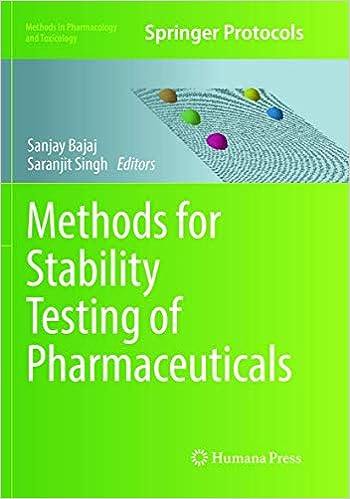Understanding How TGA Guidelines Influence Stability Testing in Australia
Introduction
In Australia, the Therapeutic Goods Administration (TGA) oversees the regulation of pharmaceutical products to ensure their safety, quality, and efficacy. Stability testing is a critical part of this framework, providing data to establish the shelf life, storage conditions, and overall reliability of medicines. TGA guidelines, while aligned with international standards like the ICH Q1A(R2), are tailored to Australia’s unique regulatory environment and climatic conditions. This article examines how TGA guidelines shape stability testing practices in Australia, explores their alignment with global standards, and highlights emerging
Overview of TGA Stability Testing Guidelines
The TGA stability guidelines outline requirements for evaluating the stability of active pharmaceutical ingredients (APIs) and finished drug products. These guidelines address:
- Climatic Considerations: Storage conditions tailored for Australia’s diverse climate, including Zone II (temperate) and Zone IVa (hot and humid).
- Stability Study Types: Long-term, accelerated, and intermediate stability studies.
- Data Requirements: Comprehensive stability data for regulatory submissions.
By adhering to these guidelines, manufacturers ensure that their products meet the stringent quality standards required for approval in the Australian market.
Key Features of TGA Stability Testing Guidelines
1. Focus on Climatic Zones
Australia’s climate varies significantly, necessitating stability testing under specific conditions:
- Zone II: 25°C ± 2°C / 60% RH ± 5% RH (temperate regions).
- Zone IVa: 30°C ± 2°C / 65% RH ± 5% RH (hot and humid regions).
Manufacturers must select storage conditions that align with the intended market and distribution regions within Australia.
2. Comprehensive Testing Requirements
TGA guidelines mandate various stability studies to evaluate product behavior over time:
- Long-Term Testing: Conducted under recommended storage conditions to determine the product’s shelf life.
- Accelerated Testing: Performed under elevated conditions (40°C ± 2°C / 75% RH ± 5% RH) to predict long-term stability in a shorter timeframe.
- Intermediate Testing: Optional, required if significant changes occur during accelerated testing.
These studies ensure that the product remains stable and effective throughout its lifecycle.
3. API and Finished Product Stability
Stability testing must be conducted for both active pharmaceutical ingredients (APIs) and finished drug products:
- APIs: Stability data ensures the consistency and quality of raw materials used in formulations.
- Finished Products: Testing evaluates how the final product performs under various storage conditions.
By addressing both APIs and finished products, TGA guidelines ensure a comprehensive evaluation of pharmaceutical stability.
4. Packaging and Storage Considerations
The interaction between drug products and their packaging is a critical focus of TGA stability testing. Manufacturers must assess:
- The impact of packaging materials on product stability.
- The ability of the packaging to protect against environmental factors like light, moisture, and oxygen.
For light-sensitive products, photostability testing is required, following ICH Q1B guidelines.
Impact of TGA Guidelines on Stability Testing
The TGA stability guidelines significantly influence pharmaceutical development and testing practices in Australia:
1. Enhanced Product Quality
Rigorous stability testing ensures that products maintain their quality, safety, and efficacy throughout their shelf life, even under extreme conditions.
2. Streamlined Regulatory Submissions
By aligning with global standards, TGA guidelines simplify the submission process for manufacturers seeking approval in multiple markets.
3. Focus on Local Needs
TGA’s emphasis on climatic zones ensures that stability testing addresses Australia’s unique environmental challenges, providing reliable data for local markets.
Challenges in Stability Testing Under TGA Guidelines
While TGA guidelines offer a clear framework, they also present challenges for manufacturers:
- High Costs: Conducting stability studies under multiple conditions and for different packaging configurations can be resource-intensive.
- Data Management: Handling large volumes of stability data across various time points and storage conditions requires advanced systems.
- Regulatory Scrutiny: Submissions must include detailed stability data, which undergoes rigorous evaluation by TGA authorities.
Tip: Invest in advanced stability software to streamline data collection, analysis, and reporting.
Best Practices for Compliance with TGA Guidelines
To ensure compliance with TGA stability testing requirements, manufacturers should adopt the following best practices:
- Plan Stability Studies Early: Incorporate stability testing into the development process to avoid delays during regulatory submissions.
- Validate Analytical Methods: Ensure that testing methods are robust and reproducible to generate reliable data.
- Use Advanced Technology: Implement automated systems for real-time monitoring of stability chambers.
- Train Personnel: Educate staff on TGA requirements and testing methodologies to ensure compliance.
- Collaborate with Experts: Engage with regulatory consultants to navigate complex requirements effectively.
Emerging Trends in Stability Testing in Australia
Several trends are shaping the future of stability testing in Australia:
- Digital Transformation: The adoption of electronic data management systems improves efficiency and accuracy in regulatory submissions.
- Predictive Analytics: Advanced modeling tools are being used to predict stability trends, reducing the reliance on long-term studies.
- Focus on Sustainability: Eco-friendly packaging materials and optimized testing protocols are gaining traction, aligning with global environmental goals.
- Increased Focus on Biologics: With the rise of biologics, TGA is introducing tailored stability requirements for these advanced therapies.
Conclusion
TGA guidelines play a crucial role in shaping stability testing practices in Australia, providing a robust framework that aligns with global standards while addressing local climatic challenges. By adhering to these guidelines, manufacturers can ensure the quality and reliability of their products, streamline regulatory submissions, and gain approval in both domestic and international markets. As technology and sustainability initiatives continue to advance, the future of stability testing under TGA guidelines promises greater efficiency and innovation, supporting the delivery of high-quality pharmaceuticals to patients worldwide.
